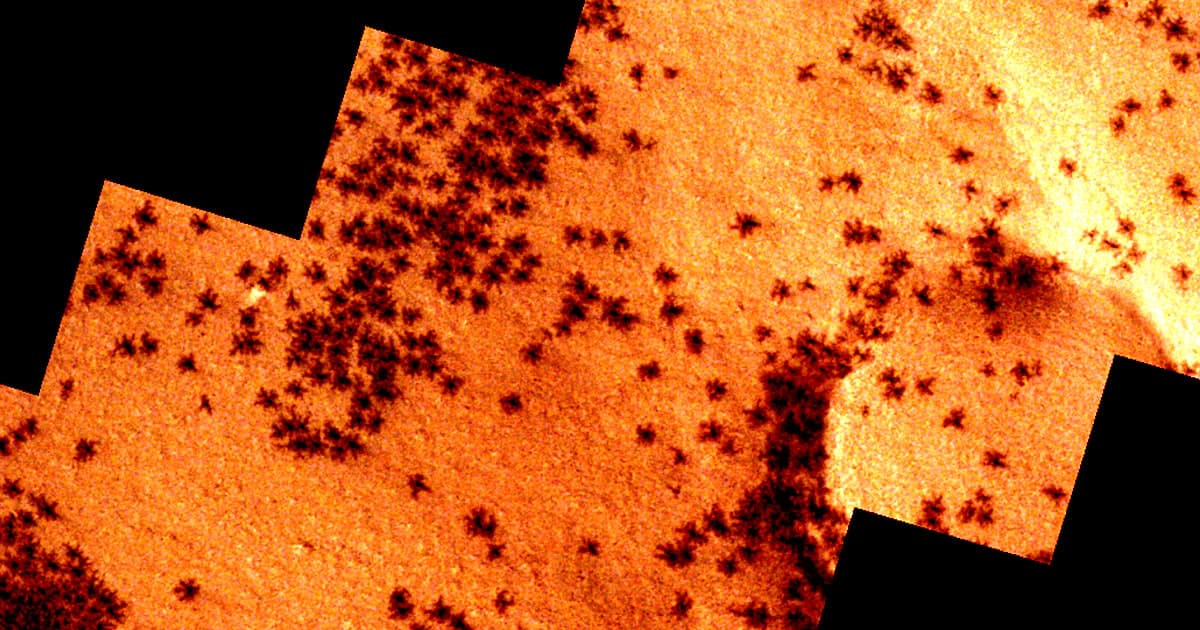They're absolutely massive.
Martian Creepy Crawlers
The European Space Agency's Mars Express orbiter has spotted "spiders" on the Red Planet's southern polar region.
But they're not the arachnids we fear or adore back on Earth — they're the result of a complex geological process that causes carbon dioxide to sublimate, digging up darker material from below the surface during the planet's spring.
And they're a whole lot larger than the spiders you're used to, measuring up to 3,300 feet across.
Carbon dioxide forms tall geysers, scattering Martian soil in "spider-shaped" patterns — a fascinating phenomenon resulting in some intriguing views from hundreds of miles away in orbit.
Emperor's New Grooves
Many of these spots have been found outside of a Martian landscape dubbed Inca City (formally Angustus Labyrinthus) thanks to its geometric ridges that summon to mind Inca ruins.
Inca City's origins remain a bit of a mystery. Scientists have proposed it may have formed over time, with sand dunes turning into stone, according to the ESA. Other theories suggest magma has been seeping through sheets of Martian rock.
The "spiders" caused by emerging carbon dioxide gas can be spotted among these Inca ruins around the time when Martian winter subsides, bathing its surface in warmer temperatures.
This theory, which dates back to as early as 2003, was first replicated in a lab in a 2021 study, with scientists successfully recreating a scaled-down version of Martian spiders using a chunk of dry ice and a machine that can simulate the Martian atmosphere.
"The experiments show directly that the spider patterns we observe on Mars from orbit can be carved by the direct conversion of dry ice from solid to gas," Open University planetary scientist and lead study author Lauren McKeown explained in a statement at the time.
More on Mars: Elon Musk Delivers Speech About Mars Settlement Plan
Share This Article
